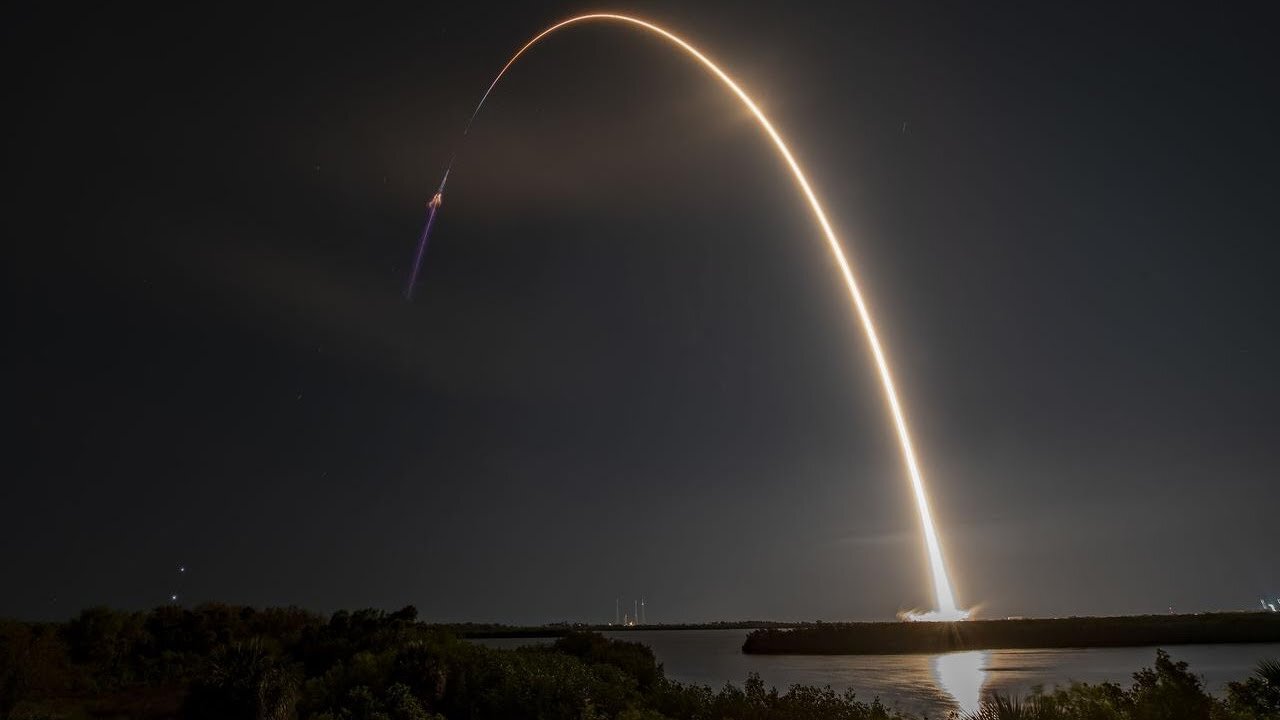Premium Only Content

Watch SpaceXs 29th Cargo Launch to the International Space Station Official NASA Broadcast
The International Space Station (ISS) is a large spacecraft that orbits Earth at an average altitude of approximately 400 kilometers (about 250 miles). It serves as a microgravity and space environment research laboratory where scientific research is conducted in astrobiology, astronomy, meteorology, physics, and other fields.
Here are some key points about the ISS and NASA's involvement:
Construction and Partnerships:
The ISS is a collaborative project involving multiple countries and space agencies. NASA, the United States' space agency, is a major partner along with Russia (formerly the Soviet Union), Europe (represented by the European Space Agency, ESA), Japan (Japan Aerospace Exploration Agency, JAXA), and Canada (Canadian Space Agency, CSA).
The assembly of the ISS began in 1998, and modules from various contributing countries were gradually added over the years.
Modules and Components:
The ISS is made up of multiple interconnected modules, including laboratory modules, living quarters, and external components. These modules are equipped with advanced life support systems, research facilities, and communication equipment.
The station is powered by large solar arrays that generate electricity from sunlight.
International Collaboration:
The ISS represents one of the most significant examples of international collaboration in space exploration. The participating countries share responsibilities for the station's maintenance, research activities, and crew rotation.
Crew and Research:
The ISS typically hosts a crew of international astronauts and cosmonauts who live and work on the station for extended periods. Crew members conduct scientific experiments, test technologies, and perform maintenance tasks.
Research aboard the ISS has contributed to advancements in medicine, materials science, biology, and other fields. The unique microgravity environment allows scientists to conduct experiments that would be impossible on Earth.
Resupply and Transportation:
Resupply missions are regularly conducted to bring new equipment, supplies, and scientific experiments to the ISS. Different space agencies and private companies are involved in transporting cargo and crew to and from the station.
Future of the ISS:
As of my last knowledge update in January 2022, discussions about the future of the ISS were ongoing. There were plans to transition from the ISS to future space exploration endeavors, including the Artemis program aimed at returning humans to the Moon and eventually sending them to Mars.
Please note that developments and plans may have progressed since my last update, so it's a good idea to check the latest information for the most current details.
-
 LIVE
LIVE
The Mel K Show
4 hours agoMel K & Dr. Kirk Moore | A Doctor’s Oath: Doing What is Right No Matter the Cost | 7-26-25
525 watching -
 LIVE
LIVE
Mally_Mouse
4 hours agoSpicy Saturday!! - 10k CELEBRATION! - Let's Play: Labyrinthine
473 watching -
 36:44
36:44
NordicVentures
5 days ago $0.03 earnedWINTER Bushcraft 2 Nights: Building ALONE a Survival Shelter
19 -
 LIVE
LIVE
Amish Zaku
6 hours agoRumble Spartans July Event- Classic Halo Multiplayer
72 watching -
 LIVE
LIVE
Phyxicx
2 hours agoRumble Halo Night w/ Rumble Spartans! - 7/26/2025
26 watching -
 7:12
7:12
nospeedlimitgermany
2 days agoAudi TT 1.8 T Roadster | 180 PS | Top Speed Drive German Autobahn No Speed Limit POV
281 -
 LIVE
LIVE
Dragoon_B
1 hour agoDragoon - Counter Strike - Premier Grind
20 watching -
 LIVE
LIVE
CODZombieGod115
3 hours ago🔴LIVE - Janus Towers DLC 4 Hype | Black Ops 6 Zombies
57 watching -
 53:25
53:25
SouthernbelleReacts
4 days agoMy Reaction to 12 Monkeys (1995) | Time Travel, Madness & Bruce Willis Brilliance
741 -
 9:04
9:04
Blackstone Griddles
1 day agoDouble Western Smashburgers on the Blackstone Griddle
6101